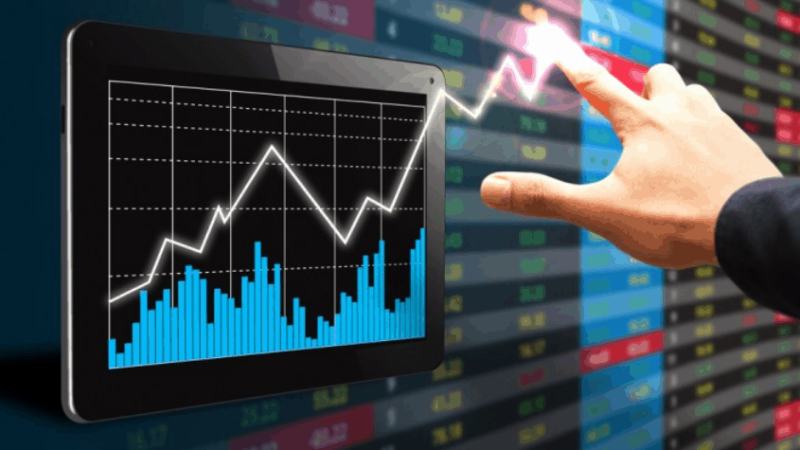CFD Trading: Shares, Stock CFD Trading, and Foreign Exchange Trading

Introduction
In the fast-paced realm of financial markets, Contract for Difference (CFD) trading has emerged as a popular and versatile instrument for investors. CFDs allow traders to speculate on the price movements of various assets without owning the underlying assets. This delves into the intricacies of CFD trading, focusing on three key areas: shares, stock CFD trading, and foreign exchange trading.
Understanding CFD Trading
What are CFDs?
Contract for Difference (CFD) is a financial derivative that enables traders to speculate on the price fluctuations of an underlying asset, such as shares, commodities, indices, or currencies, without actually owning the asset. CFDs are traded on margin, allowing investors to gain exposure to larger positions with a relatively smaller capital outlay.
Leverage and Margin
One of the defining features of CFD trading shares is the use of leverage. Leverage allows traders to amplify their market exposure, potentially magnifying both gains and losses. While leverage can enhance profits, it also increases the risk, making risk management crucial for CFD traders. Margin requirements dictate the amount of capital needed to open and maintain a CFD position.
Shares CFD Trading
The Basics of Shares CFDs
Shares CFD trading involves speculating on the price movements of individual company stocks without owning the actual shares. Traders can go long (buy) if they anticipate the price will rise or go short (sell) if they expect a decline. This flexibility enables traders to profit from both rising and falling markets.
Benefits of Shares CFD Trading
- Diversification: CFDs provide access to a wide range of shares from various industries and geographic regions, allowing for a diversified portfolio.
- Dividends: Some CFD providers offer dividend payments to traders who hold long positions, providing an additional income stream.
- Short Selling: CFDs allow traders to profit from falling markets by going short, a strategy not easily accessible in traditional stock trading.
- Risks and Considerations
Individual stocks can be highly volatile, and CFD traders must be prepared for sudden price swings. Holding CFD positions overnight may incur financing costs, impacting overall profitability.
Stock CFD Trading
Overview of Stock CFDs
Stock CFD trading broadens the scope beyond individual shares, allowing traders to speculate on the performance of entire stock market indices. Commonly traded indices include the S&P 500, FTSE 100, and Nikkei 225. Index CFDs represent the aggregated performance of a group of stocks.
Advantages of Stock CFD Trading
- Market Exposure: Stock CFDs provide exposure to a basket of stocks, enabling traders to benefit from overall market trends.
- Diversification: Similar to individual shares, trading stock indices offers diversification across multiple sectors and regions.
- Liquidity: Popular stock indices are highly liquid, facilitating easy entry and exit from positions.
Challenges and Considerations
- Global Events Impact: Stock indices can be influenced by global economic and geopolitical events, necessitating a keen awareness of external factors.
- Correlation Risks: While diversification is a strength, some stock indices may have high correlations, potentially amplifying risk during market downturns
Foreign Exchange (Forex) Trading
Introduction to Forex Trading
Forex trading involves the exchange of currencies, to profit from changes in exchange rates. The forex market is the largest and most liquid financial market globally, with currencies traded in pairs such as EUR/USD and GBP/JPY.
Advantages of Forex Trading
- High Liquidity: The forex market’s size ensures high liquidity, allowing for swift execution of trades without significant price slippage.
- 24-Hour Market: Forex operates 24 hours a day, five days a week, providing ample opportunities for traders to participate in the market.
- Leverage: Forex trading often involves higher leverage, enabling traders to control larger positions with a smaller initial capital.
Risks and Challenges
- Price Volatility: Forex markets can experience rapid and unpredictable price movements, requiring traders to use risk management strategies effectively.
- Economic Factors: Currency values are influenced by economic indicators, interest rates, and geopolitical events, making forex trading sensitive to global economic conditions.
Risk Management Strategies in CFD Trading
Stop-Loss Orders
Implementing stop-loss orders is a crucial risk management tool for CFD traders. A stop-loss order sets a predetermined exit point, automatically closing a position if the market moves against the trader beyond a specified level. This helps limit potential losses and ensures that trades are not left unattended.
Take-Profit Orders
In conjunction with stop-loss orders, take-profit orders are equally important. These orders automatically close a position when the market reaches a predefined profit level. By setting realistic profit targets, traders can secure gains and avoid the pitfalls of greed and overtrading.
Position Sizing
Determining the appropriate size for each CFD position is vital for managing risk. By allocating a percentage of capital to each trade, traders can avoid excessive exposure and potentially catastrophic losses. Consistent position sizing is a cornerstone of responsible CFD trading.
Technical and Fundamental Analysis in CFD Trading
Technical Analysis
Technical analysis involves studying historical price charts and using various technical indicators to identify potential market trends and entry/exit points. Traders often rely on tools such as moving averages, support and resistance levels, and trendlines to make informed decisions. Understanding technical analysis is essential for any CFD trader seeking to navigate the complexities of market price movements.
Fundamental Analysis
While technical analysis focuses on historical price data, fundamental analysis delves into the underlying factors that drive market movements. For shares and stock CFD trading, this may include examining a company’s financial statements, earnings reports, and industry trends. In forex trading, understanding economic indicators, interest rates, and geopolitical events is crucial for making informed decisions.
Choosing a Reliable CFD Broker
Selecting the right CFD broker is a critical aspect of successful trading. Traders should consider factors such as the broker’s reputation, regulatory compliance, trading platform features, and customer support. It is essential to choose a broker that aligns with the trader’s specific needs and offers a secure and user-friendly trading environment. The financial markets are dynamic, and staying informed about market developments is key to making sound trading decisions. Traders should regularly follow financial news, market analysis, and economic indicators that may impact their chosen CFD instruments. Additionally, continuous learning through educational resources, webinars, and market insights can help traders refine their skills and adapt to changing market conditions.
Conclusion
CFD trading offers a versatile and dynamic approach to financial markets, providing opportunities in shares, stock indices, and forex. While the profit potential is substantial, traders need to approach CFD trading with a thorough understanding of the instruments involved, sound risk management strategies, and a continuous commitment to staying informed about market conditions. By exploring the world of CFD trading in shares, stock indices, and forex, investors can navigate the complexities of financial markets and potentially achieve their trading goals.


